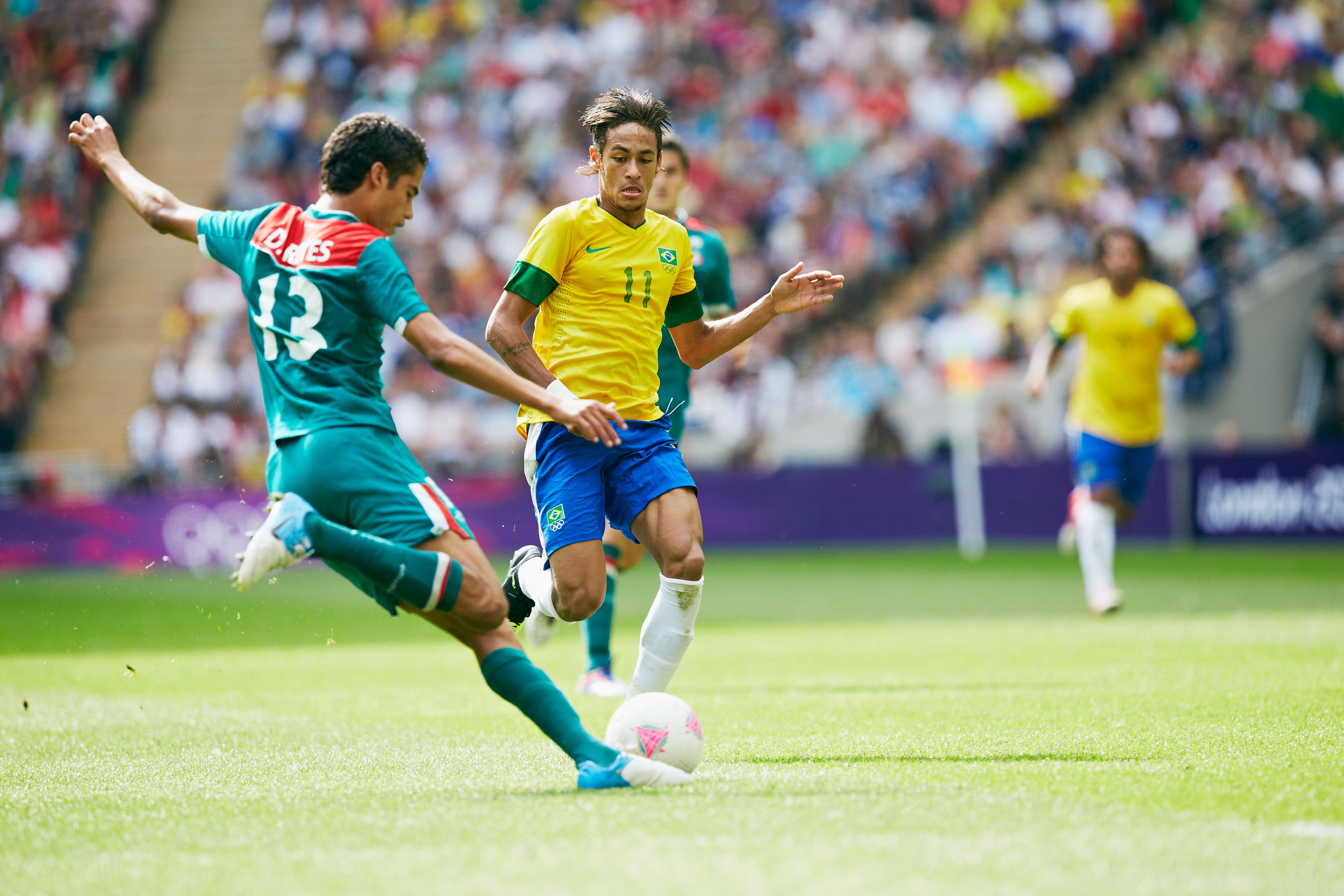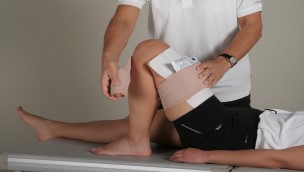Thigh strain
A thigh (quadriceps) strain is a very common sports injury. If you have had the injury once, the risk of re-injury is increased.

Thigh strains are common in sports such as football, and there are more players sidelined due to this injury, compared to strains in the hamstrings or groin.
Some factors might potentially increase the risk of injury:
- Feeling exhausted
- Muscle weakness or a difference in the strength of the quadriceps in relation to the hamstrings
- Activities that involve a lot of sprinting or kicking
- Previous strain injury
The quadriceps is composed of four muscles. One of these is the rectus femoris, which is most often injured. It is also the only muscle that crosses two joints (the hip and knee joint).
Injury mechanism
In football, thigh strains often occur when the player is slowing down (decelerating) after a sprint, either because they are taking too small or too large steps. This injury can also occur when an athlete sprints, jumps, or kicks.
Type of injury
Thigh strains can be categorised into two groups depending on where they occur:
- Type 1: Located far down on the thigh where the muscle and tendon join above the knee. This is the most common type, and is known as a distal strain.
- Type 2: Occurs where the muscle begins. We will not go into more detail here as this kind of injury is uncommon.
Type 2 injuries have a longer rehabilitation period and a poorer prognosis, compared to type 1 injuries.
Distal strains
A common sign of a distal strain injury is an acute pain in the affected area during activities that require powerful contractions of the muscle. Pain and tenderness are often felt in the injured area while stretching or straightening the leg against some resistance.
If the strain is severe enough, the muscle may be torn completely in two. If this is the case, there is usually swelling and discolouring. It will also be possible to feel a dip in the muscles with a «lump» next to it. Total ruptures recover well without surgery and there are usually no long-term complications.
Treatment
One should commence acute treatment according to the PRICE principle immediately following the time of injury. After this, it is important to follow a structured rehabilitation program where the focus is to minimise scar tissue and stimulate healing. The aim is to regain as close to normal muscle length, muscle strength and control as possible. Massage and other passive treatment techniques can reduce the symptoms, but should only be used in addition to the treatments listed above.
No NSAIDs
Anti-inflammatory medications (NSAIDs), such as Voltaren and Neurofen, are not recommended as they can hinder the body's natural healing processes.
You can still maintain good fitness by performing other forms of exercise that are pain-free. Examples are swimming, strength training or any other kind of exercise you can do. It is advised to seek help from a skilled physiotherapist to help you with sport-specific rehabilitation.
Re-injury is not uncommon. It is, therefore, important that the athlete continues with rehabilitation exercises long after they have returned to the sport. This will minimise the risk of re-injury.


